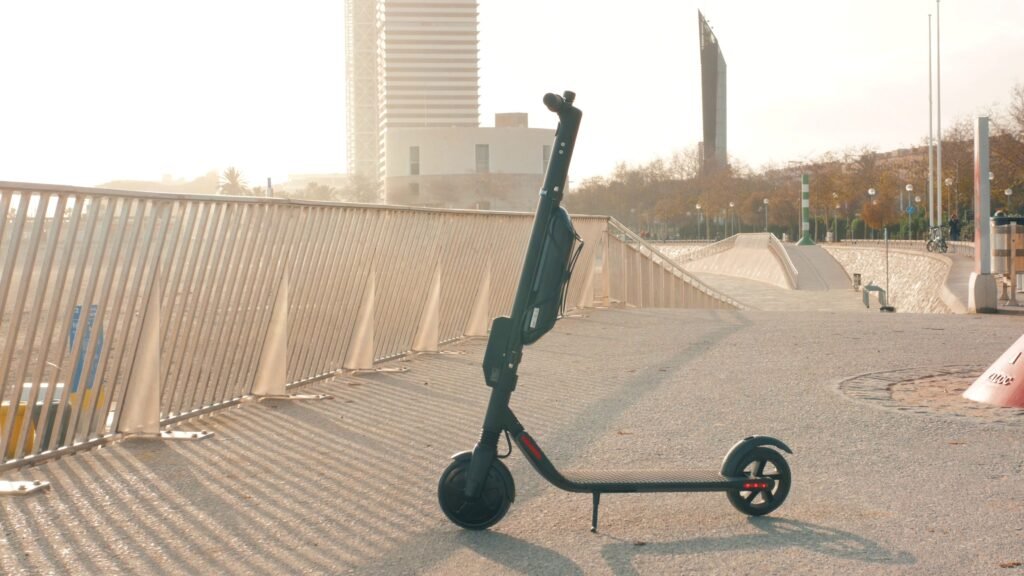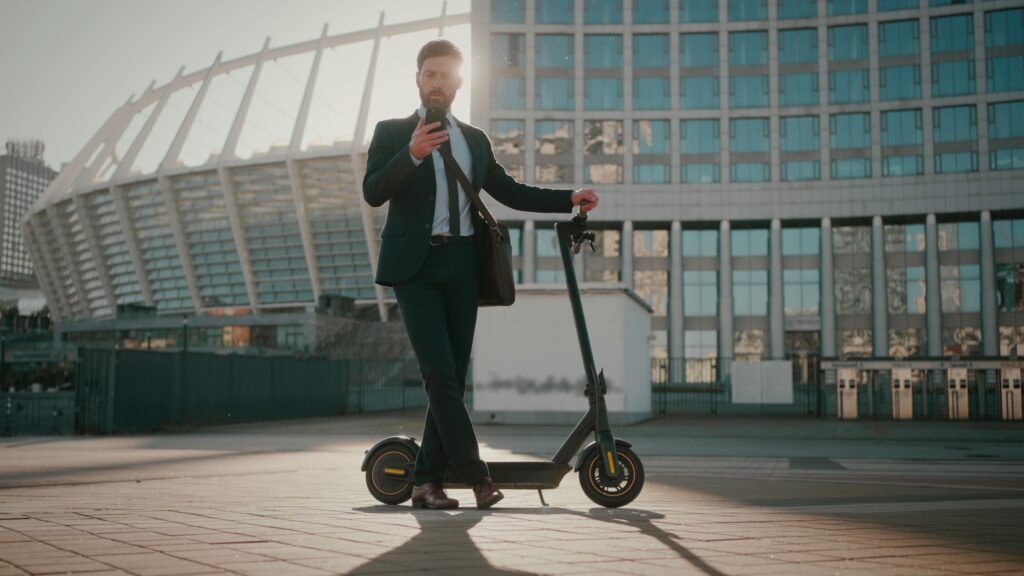Electric Scooters with Shock Absorbers: Your Ultimate Guide
Introduction
- A Brief History of Electric Scooters and Suspension Technology
- Early Days of Electric Scooters
- The Surge in Popularity
- Technological Leaps Forward
- The Evolution of Shock Absorber Technology: Making the Ride Smooth
- Understanding Electric Scooter Suspension: Types and Benefits
- What Exactly is Electric Scooter Suspension?
- Why is Suspension So Important?
- Types of Electric Scooter Suspension Systems
- Should I Get an Electric Scooter with Suspension? Key Factors
- How Suspension Varies by Scooter Type
- Which Scooters Have the Best Suspension? Top Models Reviewed
- Maintaining Your Electric Scooter’s Shock Absorbers: Longevity and Performance
- Essential Maintenance Steps:
- Regulations, Safety, and Demographics: Understanding the Bigger Picture
- Safety and Regulations: Navigating the Rules of the Road
- Demographic Trends: Who is Riding?
- People Also Ask: Your Top Suspension Questions Answered
- Conclusion: Embracing the Smooth Ride Revolution
That jarring rattle as you hit an unexpected crack in the pavement. The constant vibration that leaves your hands feeling numb after a ride. If you’ve ridden an electric scooter on a typical city street, you know the feeling. While these vehicles are a fantastic solution for urban commuting, a rough ride can ruin the experience and even cause discomfort in your back and joints.
The solution? A quality suspension system. The integration of shock absorbers has transformed electric scooters from bumpy novelties into sophisticated vehicles built for daily comfort and safety. This guide will explain why suspension is no longer just a luxury feature—it’s an essential component for any serious rider.
Should you get a scooter with suspension? For anyone riding on imperfect city streets or seeking a comfortable ride, yes, suspension is essential. It improves comfort, safety, and control by absorbing shocks from bumps and cracks in the road.
A Brief History of Electric Scooters and Suspension Technology

To truly appreciate the significance of shock absorbers on today’s electric scooters, let’s take a quick trip back in time.
Early Days of Electric Scooters
Believe it or not, the idea of battery-powered two-wheelers dates back to the early 20th century. Inventors tinkered with these concepts, but practical adoption remained limited. The real breakthrough came with advancements in battery technology, particularly the development of lithium-ion batteries. This leap forward provided the necessary power and range to make electric scooters a viable form of transportation. Early models, however, were often more novelty than necessity, lacking the features we expect today.
The Surge in Popularity
The late 2010s witnessed an electric scooter revolution. Urban congestion was on the rise, and people were seeking sustainable transportation solutions. Shared electric scooter services exploded onto the scene, making them accessible to a massive audience. This era saw electric scooters transition from niche gadgets to a genuine eco-friendly alternative to cars and motorcycles, appealing to both commuters and leisure riders alike.
Technological Leaps Forward
As popularity surged, manufacturers focused on innovation. Improved braking systems, more efficient batteries, and enhanced suspension mechanisms became standard. Smart features like GPS tracking and mobile app integration further improved the user experience and enhanced safety. These developments solidified electric scooters’ place as not just toys, but serious urban mobility tools.
The Evolution of Shock Absorber Technology: Making the Ride Smooth
Initially, ride quality on electric scooters was, to put it mildly, bumpy. Early models often lacked any form of effective suspension. Every crack in the pavement, every pebble on the road, was directly transmitted to the rider. This made for uncomfortable rides, especially on longer journeys or uneven city streets.
The integration of shock absorbers changed everything. This marked a pivotal moment, addressing a core user need: comfort. The evolution of shock absorption technology has been key. From early, basic attempts to today’s sophisticated systems like C-type shock absorption structures and traditional hydraulic suspension systems, the progress is remarkable. Modern electric scooters now boast smoother, more stable rides. These improvements are not just about comfort; they enhance overall control, stability, and crucially, safety, making electric scooters with suspension a truly practical option for daily commutes and beyond.
Understanding Electric Scooter Suspension: Types and Benefits
To understand the value of shock absorbers, it’s essential to first know what electric scooter suspension is and why it has become such a crucial feature for modern riders. Let’s break down the different types and why they matter.
What Exactly is Electric Scooter Suspension?

In simple terms, electric scooter suspension is a system designed to absorb shocks and vibrations from uneven road surfaces. Just like in cars or motorcycles, it acts as a buffer between the rider and the bumps, cracks, and imperfections of the terrain.
Why is Suspension So Important?
- Enhanced Comfort: Suspension dramatically increases ride comfort. By absorbing shocks, it minimizes jolts and vibrations felt by the rider, reducing fatigue and making longer journeys enjoyable.
- Improved Stability and Handling: Especially on uneven surfaces, suspension keeps your tires in better contact with the ground. This improves stability and handling giving you more control and confidence, particularly when cornering or navigating rough patches.
- Increased Safety: By maintaining better contact with the road, suspension enhances braking effectiveness and reduces the risk of losing control, boosting overall safety.
- Potential for Scooter Longevity: While not directly user-perceptible, reducing vibrations and shocks can also decrease stress on the scooter’s frame and components over time, potentially extending its lifespan.
Types of Electric Scooter Suspension Systems
Electric scooters utilize several types of suspension systems, each offering distinct benefits in terms of performance, comfort, and cost. Understanding these is key to choosing the right scooter.
| Suspension Type | Best For | Feel & Performance | Cost |
|---|---|---|---|
| Spring | Basic commuting, budget-conscious buyers | Good for small bumps, can be bouncy | Low |
| Hydraulic | Most urban riders, all-around use | Very smooth, controlled, great value | Medium |
| Rubber | Low maintenance, durability | Firm, effective on moderate bumps | Medium |
| Air | Maximum comfort, adjustability | The smoothest, most luxurious ride | High |
| Dual-Suspension | Bumpy roads, ultimate comfort | The best overall shock absorption | Medium-High |
Should I Get an Electric Scooter with Suspension? Key Factors

For any rider who values comfort and safety, a scooter with suspension is almost always the right choice. However, the best suspension system for you depends on several key factors. When choosing an electric scooter with suspension, consider the following:
- Terrain: The type of terrain you ride on is the most critical factor. If you’ll be riding primarily on smooth pavement, basic spring or rubber suspension might suffice. However, to handle the bumps and cracks of rougher urban streets or off-road trails, hydraulic or air suspension, or even dual suspension, becomes increasingly important. Off-road riding directly necessitates robust suspension.
- Rider Weight and Style: Heavier riders may benefit from adjustable suspension (like hydraulic or air) to fine-tune the ride. Aggressive riding styles also demand more robust and responsive suspension. If you are too heavy for electric scooter, suspension performance will be affected.
- Comfort Priorities: How much do you value a smooth, comfortable ride? If comfort is paramount, invest in scooters with more advanced suspension systems like hydraulic, air, or dual suspension.
- Budget: Suspension systems add to the cost of an electric scooter. Spring and rubber suspensions are generally more budget-friendly, while hydraulic and air are typically found on mid-range to premium models. Balance your need for suspension with your budget. While even basic suspension is better than none, a significant investment in a higher-quality suspension system is almost always worthwhile for frequent riders.
- Adjustability: Do you want to be able to fine-tune your suspension? Adjustable hydraulic and air suspension allow you to customize the ride feel based on your weight and the terrain.
How Suspension Varies by Scooter Type
The need for and type of suspension often depends on the scooter’s intended use. Robust suspension is critical for off-road models, while comfort-focused suspension is a priority for daily commuters.
- Off-Road Electric Scooters: As the name suggests, these are built for tough terrain. Robust suspension is absolutely critical for “off-road electric scooters“. Expect to find dual suspension, often hydraulic or air-based, and sometimes even swingarm designs to handle jumps, bumps, and uneven trails. Examples mentioned are relevant here, e.g., Mantis King GT.
- Commuter Electric Scooters: For daily city commutes, comfort is key. Good “commuter electric scooters” will feature at least front suspension, and many offer dual suspension (front and rear) to handle urban imperfections. Suspension in commuter scooters enhances the daily riding experience significantly. Models like Emove Cruiser S are relevant here.
- Seated Electric Scooters: Comfort-focused by design. Suspension is even more crucial for “seated electric scooters“ as riders are seated and more directly impacted by bumps. Suspension in these models contributes to a relaxed and stable ride.
- Kids’ Electric Scooters: While not always a priority, some “kids’ electric scooters” do incorporate basic suspension. This adds a level of comfort and safety for younger riders, particularly if they are riding on pavements that are not perfectly smooth. Safety is paramount for kids’ scooters.
Which Scooters Have the Best Suspension? Top Models Reviewed

While many scooters feature suspension, certain models are renowned for their superior ride quality and robust shock absorption. Here are some of the top models known for having the best suspension on the market:
- Mantis King GT: Rightly recognized as a top all-terrain option. Its adjustable hydraulic shocks and swingarms truly set it apart. Emphasize the adjustability for varied terrains (sidewalks, streets, trails, etc.) Its 9/10 suspension rating speaks volumes. It is also important to note the price under $2,500 is competitive.
- SPLACH Turbo: Excellent value choice. Highlight the “rarity” of dual swingarm suspension at this price point. Underscore its affordability under $800 and strong performance metrics (speed, acceleration) coupled with good suspension – making it stand out for budget-conscious buyers.
- Emove Cruiser S: Ideal for commuters, especially taller or heavier riders. Its robust build and focus on stability and comfort for longer rides is a key selling point. Acknowledge its size and weight as a trade-off for superior comfort and suspension.
- Inmotion Climber: Hill-climbing king! Its dual motors and powerful battery make it a climbing champion, and its suspension complements this performance.
Maintaining Your Electric Scooter’s Shock Absorbers: Longevity and Performance
Just like any mechanical component, the shock absorbers on your electric scooter require regular maintenance to function optimally and achieve a long lifespan.
Essential Maintenance Steps:
- Regular Inspection and Cleaning: Routine checks are vital. Look for damage, leaks (especially for hydraulic systems), cracks, or misalignment. Cleaning, especially after off-road use, is crucial. Use warm water and a soft cloth – avoid harsh chemicals.
- Lubrication is Key: Lubricate suspension components every six months or roughly every 30 hours of riding. Unusual noises can signal the need for lubrication. Apply small amounts of grease to moving parts (folding the scooter can make access easier) – avoid over-lubricating to prevent leaks.
- Suspension Adjustments (If Applicable): If your scooter has adjustable suspension (preload, compression, rebound – often on hydraulic and air systems), learn how to adjust it (replace with actual user manual or guide link). Familiarize yourself with your user manual. Adjust settings based on your weight and typical riding conditions for optimal performance.
- Addressing Common Issues & Troubleshooting: Learn to recognize signs of suspension problems: sagging, noises, instability, uneven tire wear. Sagging may indicate preload adjustments needed. Noises might mean lubrication is required or components are wearing out. For persistent problems or repairs beyond basic maintenance, always consult a professional technician.
Regulations, Safety, and Demographics: Understanding the Bigger Picture

Beyond the hardware itself, it’s important to understand the broader context of electric scooter use, including safety regulations and key demographic trends.
Safety and Regulations: Navigating the Rules of the Road
As electric scooters become more common, safety concerns and regulations are hot topics.
- Safety Concerns: User safety is paramount. Accidents, often involving single riders due to inexperience or lack of familiarity with the scooter, are a reality. The article mentions the cost of e-scooter injuries in New Zealand. Emphasize the need for rider education, wearing helmets and protective gear, and responsible riding.
- Infrastructure Needs: Cities often lack dedicated scooter lanes. This forces riders to share roads with cars or sidewalks with pedestrians, increasing accident risks and conflicts. Advocate for better infrastructure to support micromobility solutions.
- Regulatory Landscape: Regulations vary widely by location. Speed limits, helmet laws, riding area restrictions differ significantly, leading to confusion. Some regions are considering aligning scooter rules with bicycle regulations for simplification and safety. This context is important when thinking “Is it legal to remove a speed limiter?” – generally, no, and laws vary.
- Enforcement Challenges: Enforcing regulations is often difficult. Cities are grappling with reckless riding, sidewalk parking, and ensuring compliance. Scooter operators and cities need to work together to improve safety and enforcement through measures like user education and technology limitations (speed governors etc.).
Demographic Trends: Who is Riding?
Understanding electric scooter demographics provides insights into user preferences and adoption trends.
- User Demographics: The article cites a survey with a young, slightly male-skewed user base, aligning with broader trends. Highlight that younger adults are early adopters, but electric scooters appeal to a diverse demographic overall, as they are increasingly seen as viable transportation across age groups.
- Age and Scooter Type Preferences: Younger adults favor traditional scooters; older adults appreciate AI-assisted models. The article suggests younger riders might be less risk-averse. Explore whether different age groups have different suspension preferences.
- Racial and Ethnic Diversity: The user base reflects a mix of backgrounds. Acknowledge this diversity, suggesting potential variations in perceptions and acceptance across different communities. The user base reflects a mix of backgrounds, suggesting that electric scooters have broad appeal and are being adopted across a diverse range of communities.
- Economic Factors: Accessibility to lower-income groups is a key benefit. E-scooters can provide affordable transport options, especially important with rising fuel costs. This is positive in terms of equitable access to mobility.
- Geographic Variations: Public perception, local policies, infrastructure, climate, and population density all influence adoption rates and demographics in different cities. Micromobility solutions need to be tailored to specific locations.
People Also Ask: Your Top Suspension Questions Answered
Yes, for the vast majority of riders, suspension is essential. If you plan to ride on anything other than perfectly smooth surfaces, a suspension system will dramatically improve your comfort, control, and overall safety by absorbing the shocks from bumps and cracks in the road.
This depends entirely on their suspension. A standard electric scooter with no suspension and solid tires will provide a harsh, jarring ride on bumpy roads. However, an electric scooter with a quality dual-suspension system (hydraulic or air) is specifically designed to excel on such terrain, offering a smooth and stable experience.
Generally, air suspension offers the smoothest and most adjustable ride, though it is often found on premium models. Hydraulic suspension is a very close second and provides an exceptionally smooth and controlled ride that is perfect for most urban environments. For the best overall experience, look for a scooter with dual suspension, meaning it has shock absorbers on both the front and rear wheels.
Absolutely, especially if comfort is a priority or if you ride on rougher roads. Dual suspension, which places shock absorbers on both the front and rear wheels, provides the most comprehensive shock absorption. This results in the smoothest possible ride and significantly reduces the fatigue and jarring that can lead to back pain.
Back pain while riding is often caused by the constant jolts and vibrations from the road. To prevent this, the best scooter is one with a robust dual-suspension system and pneumatic (air-filled) tires. Models known for exceptional comfort, like the Emove Cruiser S or Mantis King GT, are excellent choices as they are engineered to minimize impact and provide the smoothest ride possible.
Yes, like any mechanical part, they require some basic maintenance. This includes regular inspections for damage or leaks, cleaning them (especially after off-road use), and lubricating the moving components every few months to ensure they continue to function smoothly and quietly.
Conclusion: Embracing the Smooth Ride Revolution

Electric scooters with shock absorbers have revolutionized urban transport. They represent a significant step towards sustainable urban mobility, offering comfort, convenience, and an enjoyable riding experience.
From their humble beginnings to today’s advanced models with sophisticated suspension systems, electric scooters have come a long way. By understanding the benefits of shock absorbers, choosing the right type of scooter for your needs, and practicing proper maintenance, you can fully enjoy the advantages of this exciting mode of transportation.
While challenges regarding safety and regulation persist, the ongoing evolution of electric scooters, particularly with improvements in suspension and safety features, promises a smoother, safer, and more sustainable future for urban mobility. So, embrace the ride, but always ride responsibly!



